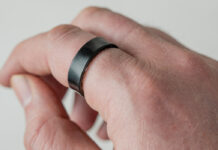
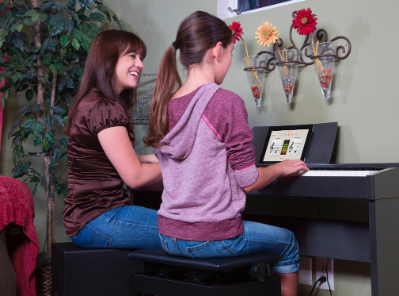 I was both excited and skeptical when I heard that Roland was releasing the F-20. I was excited because of the sub-$1,000 price point for a weighted-action, 88-note digital piano. I was skeptical for the same reasons.
I was both excited and skeptical when I heard that Roland was releasing the F-20. I was excited because of the sub-$1,000 price point for a weighted-action, 88-note digital piano. I was skeptical for the same reasons.
Digital Piano 101
There’s a lot of research, design and detail that goes into creating a convincing digital piano that can mimic the real thing. When digital sampling was becoming somewhat affordable a few decades ago, the quality high-water mark was (and still is) mimicking all the nuances of piano.
From a technical / mechanical standpoint, pianos are arguably some of the most complicated acoustic instruments on the planet. There are countless moving parts and components that go into a pianos’ construction. Each key can have 1-3 strings that vary in length and thickness. The timbre and volume nuances that each key can produce can seem endless. Not only do you have to pay attention to the variety of each key, but when you incorporate the use of the three pedals, the combinations and permutations of tone possibilities skyrocket.
Needless to say, there are a lot of variables at play when building a convincing digital piano. Roland’s been at this for a couple of decades and has had a successful run at this digital piano gig.
Under the Hood
Roland has done a fair amount of research into what happens in a piano and how different instruments react in different situations. They’ve developed a fairly complex modeling / synthesis technology they term “SuperNATURAL”. What results is much more than just a simple digital sample playback device – it’s a more efficient and responsive engine that recreates how a piano responds and sounds based upon the players’ performance.
The SuperNATURAL engine used in the F-20 is identical to the one used in their flagship digital pianos.
The Features
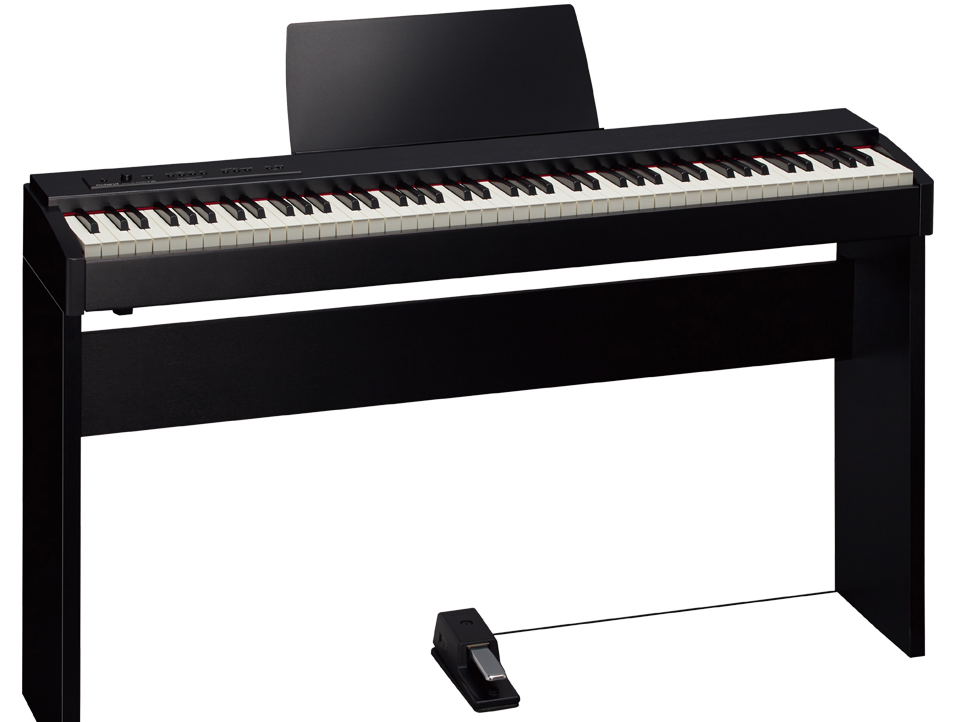 The build quality is quite good – the casing is very solid, yet the whole package is reasonably light for an 88-note piano (it weighs 44lbs without a stand). If you want to use it as a portable piano, then with a case, this will start to tax the most seasoned roadie. The look is understated and blends easily into most surroundings. Roland offers a furniture-style stand if you’re looking to have it as a more permanent addition to a room.
The build quality is quite good – the casing is very solid, yet the whole package is reasonably light for an 88-note piano (it weighs 44lbs without a stand). If you want to use it as a portable piano, then with a case, this will start to tax the most seasoned roadie. The look is understated and blends easily into most surroundings. Roland offers a furniture-style stand if you’re looking to have it as a more permanent addition to a room.
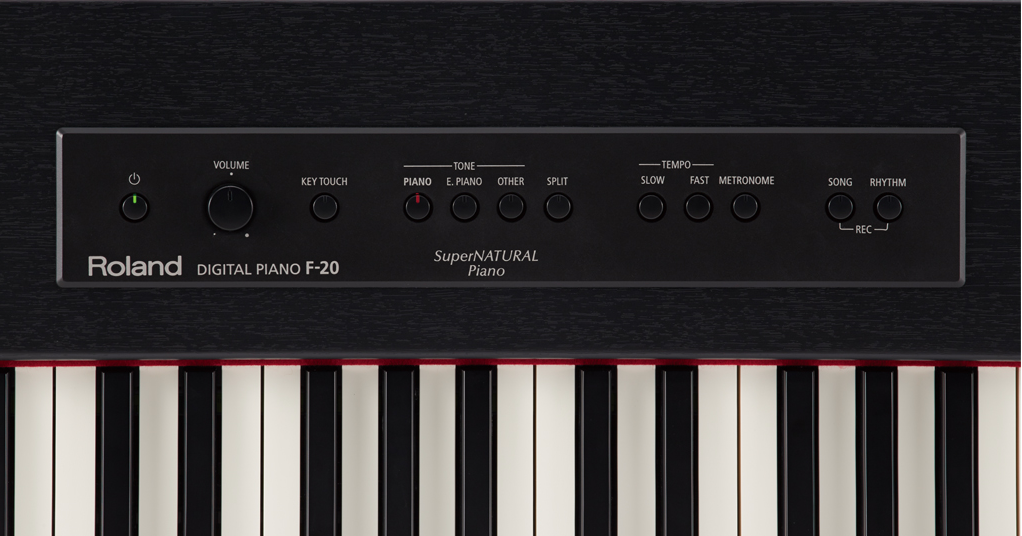 There are minimal controls on the F-20 – sound selection is done by pressing Piano, E-Piano or Other and hitting a note to select from several variations (you can also select sounds wirelessly with an iPad – more on this below).
There are minimal controls on the F-20 – sound selection is done by pressing Piano, E-Piano or Other and hitting a note to select from several variations (you can also select sounds wirelessly with an iPad – more on this below).
The onboard sounds (6 Pianos, 7 Electric Pianos, 22 Other) cover most keyboard bases and the quality is pretty good. The main piano sound has a great deal of depth and realism and is fun to play. The rest of the sounds include electric pianos, a decent Hammond B3 emulation, a pretty happening Clavinet, plus some nice pads, synth leads and orchestral strings. The onboard speakers are decent enough, but don’t expect the physical “oomph” of the bottom end through them.
The keyboard can be split/layered and there’s a Twin function that splits the keyboard into two exact copies for duets. You can also tweak the tone and ambience of the sound. The only downside is that these functions are again accessed via button-plus-note combinations. I can appreciate that there’s a level of simplicity that Roland wanted to incorporate into the control panel, but it wouldn’t have been a bad idea to incorporate another knob or slider to facilitate some of the deeper parameter selection.
The Important Stuff
How does the piano feel? The marketing brochures mention a “Ivory Feel-G Keyboard with Escapement”, but what does that mean?
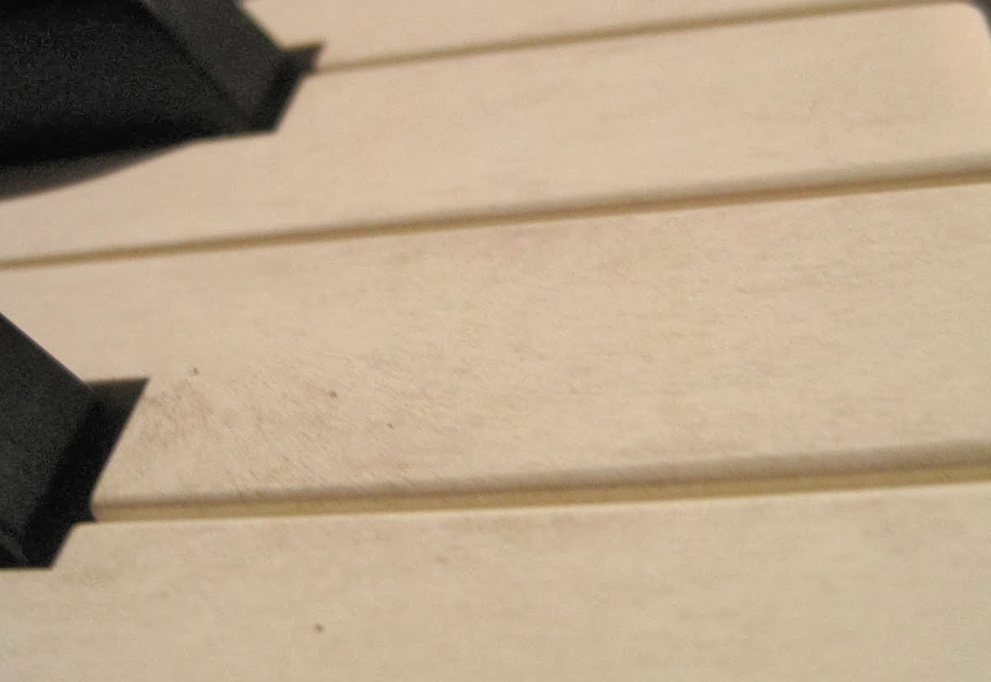 Piano keys used to be made with real ivory. Given that using real ivory in the manufacture of anything these days is frowned upon, the desire is to mimic that feel. I felt that, to the touch, the keys felt good – no smooth plastic and just enough texture to feel right.
Piano keys used to be made with real ivory. Given that using real ivory in the manufacture of anything these days is frowned upon, the desire is to mimic that feel. I felt that, to the touch, the keys felt good – no smooth plastic and just enough texture to feel right.
The action (the resistance of the keys to press) was a bit light for my taste, but for a beginning performer, they will be perfect. The action of the keyboard reminded me of the feel of some of the smaller Yamaha grand pianos.
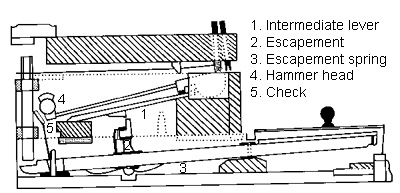 The escapement action is a characteristic of a grand piano. It’s that slight click you feel when you slowly press a key – as if the key is passing by a notch. It’s the result of a mechanism in a real grand that allows for faster repeating of notes. I can’t really say that I noticed the feel of this when playing the F-20 – it’s a subtle feature, so it may have just eluded me.
The escapement action is a characteristic of a grand piano. It’s that slight click you feel when you slowly press a key – as if the key is passing by a notch. It’s the result of a mechanism in a real grand that allows for faster repeating of notes. I can’t really say that I noticed the feel of this when playing the F-20 – it’s a subtle feature, so it may have just eluded me.
Overall, despite the relatively light action of the keyboard, I found the F-20 responsive and easy to play. The onboard speakers don’t really do justice to the tone the sound engine can produce. I was better able to appreciate the sound of the F-20 after plugging in my headphones.
Other Features
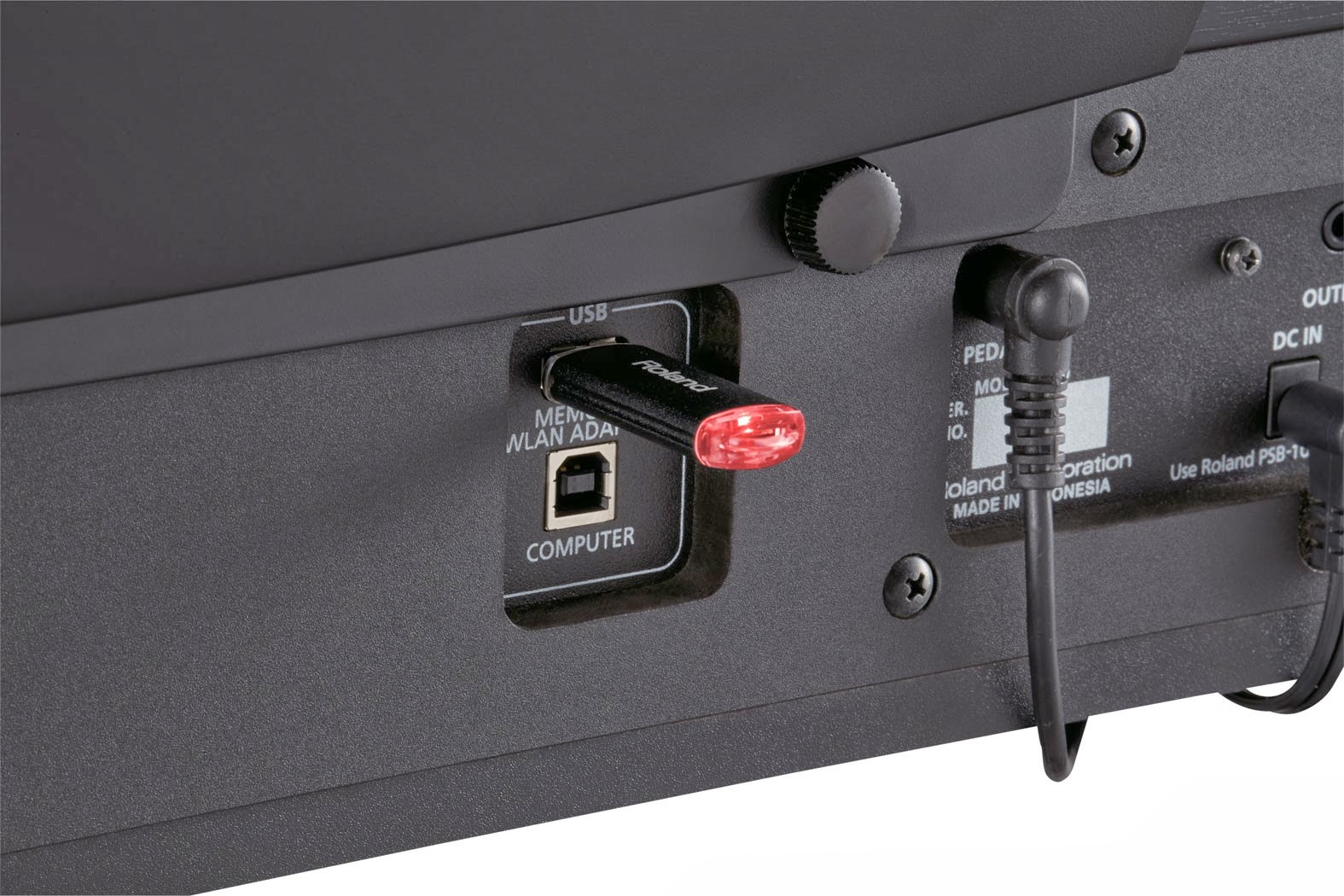 The F20 has a bunch of very cool features such as 32 interactive style accompaniments (backing tracks) so that you can “play with the band.” This feature allows you to play regular pop, jazz, classical, country, big band, and other styles of music on the piano and then a background group of instruments (including a drummer) will follow your playing and recognize your chords and notes (chord recognition technology) and play appropriate backgrounds just like a band or orchestra would do.
The F20 has a bunch of very cool features such as 32 interactive style accompaniments (backing tracks) so that you can “play with the band.” This feature allows you to play regular pop, jazz, classical, country, big band, and other styles of music on the piano and then a background group of instruments (including a drummer) will follow your playing and recognize your chords and notes (chord recognition technology) and play appropriate backgrounds just like a band or orchestra would do.
A big bonus with the F-20 is that it links to a couple of Roland iOS apps via the company’s wireless USB port/key (sold separately). Piano Partner assists with aural and visual learning (beginner through to expert) and provides an easy way of learning the pitches of notes by ear and by keyboard/stave position. It’s particularly good for kids, who’ll love the colourful and clear visuals.
 Secondly, the Air Performer App enables you to stream music from your iTunes library through the F-20’s speakers and change its speed – great for inspiring practicing and jamming for all levels of players.
Secondly, the Air Performer App enables you to stream music from your iTunes library through the F-20’s speakers and change its speed – great for inspiring practicing and jamming for all levels of players.
Finally, there’s USB MIDI to connect to a DAW and the option to save recordings/songs or import MIDI files via USB stick.
Final Thoughts
The appeal of a digital piano is unmistakable – especially for families who want to start piano lessons, but are hesitant to invest in an expensive instrument. At a sub-$1,000 price-point, the Roland F-20 seems to make the commitment to music a bit less painful.
There’s no denying that the small form-factor, ability to play through headphones and other features a digital piano packs are advantages over a real acoustic piano. Using a digital piano as an introduction to the instrument is a logical first step that can be upgraded later if musical talent flourishes!
The F-20 sounds good and offers a nice balance of features for the money. It’s not going to be the first choice of professional concert pianists, but it’ll get them started and well on their way and you can cross that bridge when you come to it.

